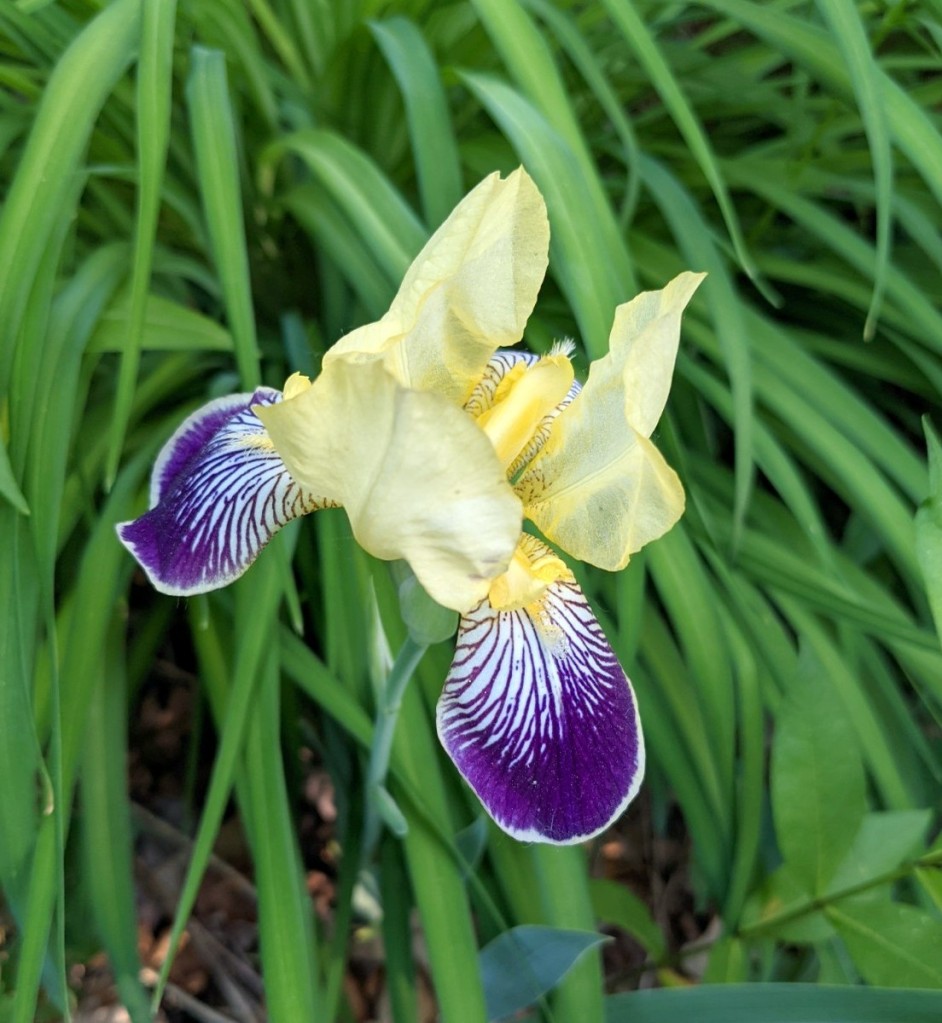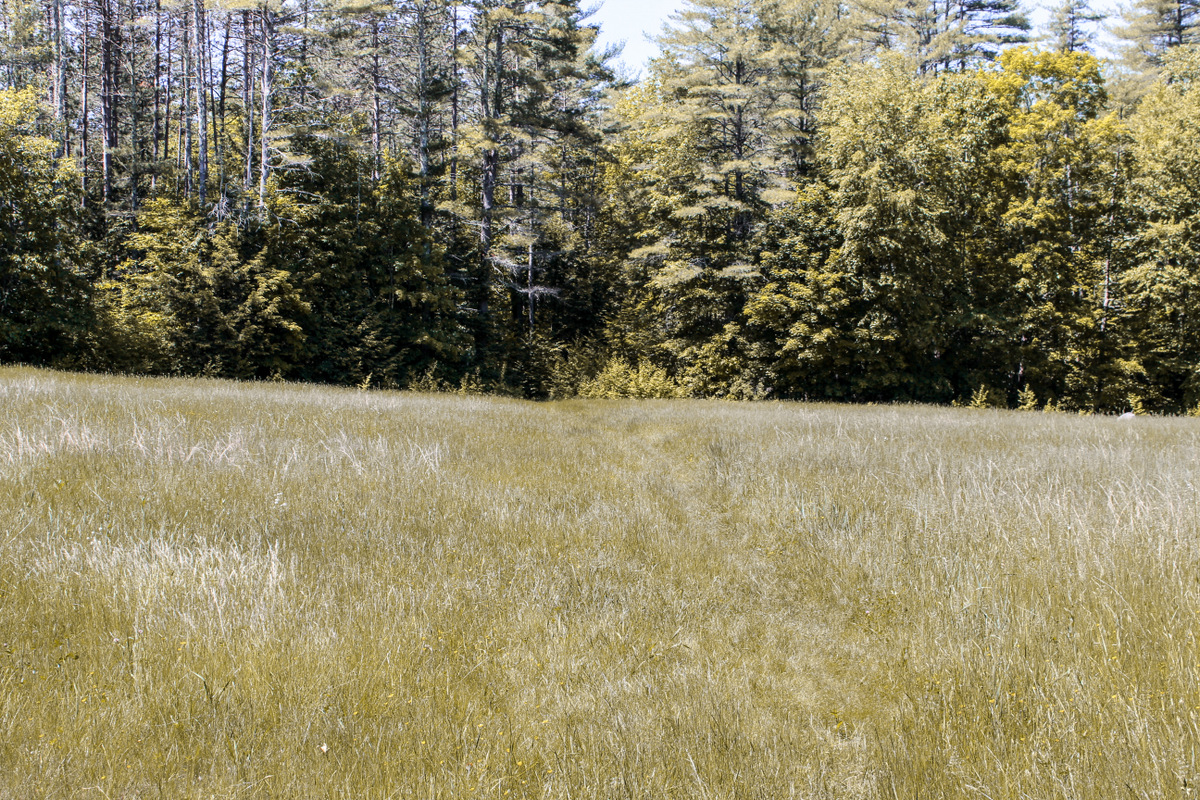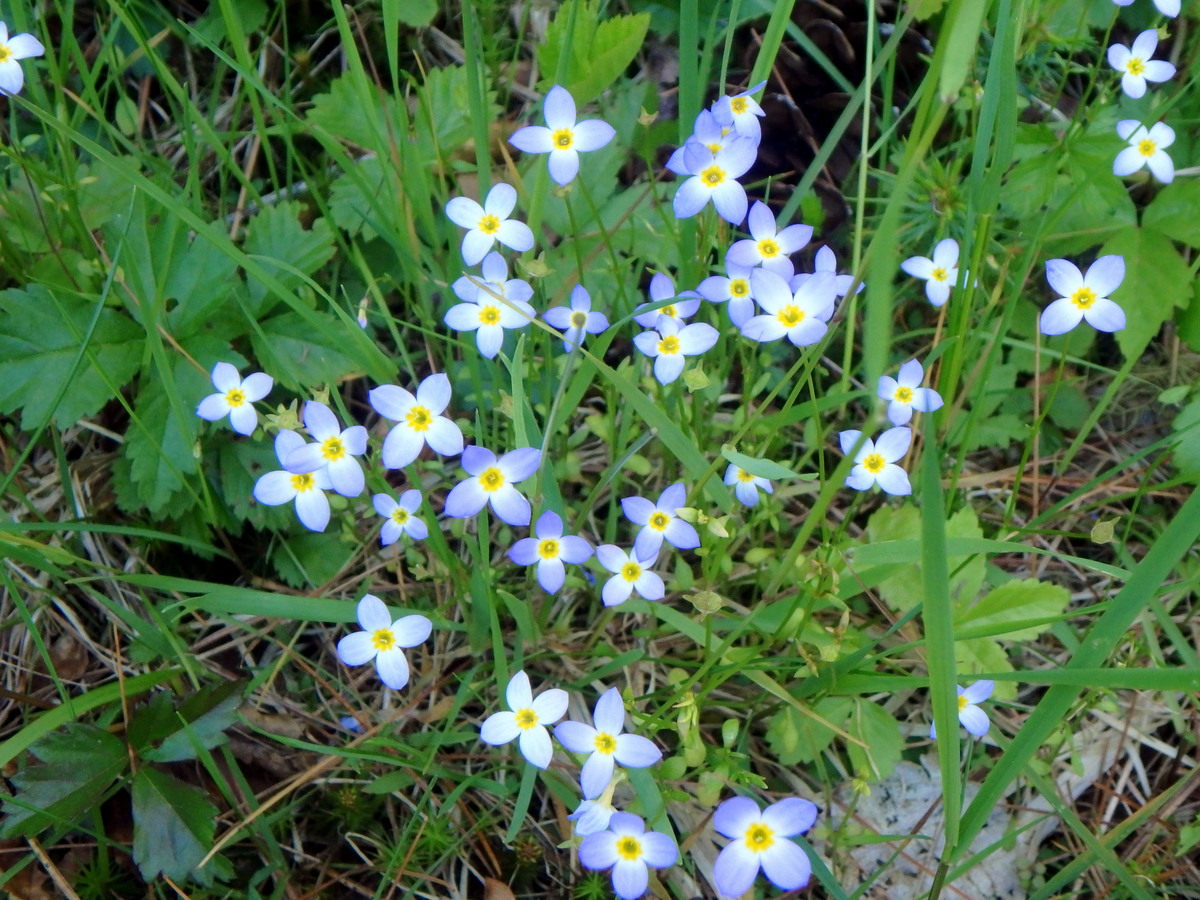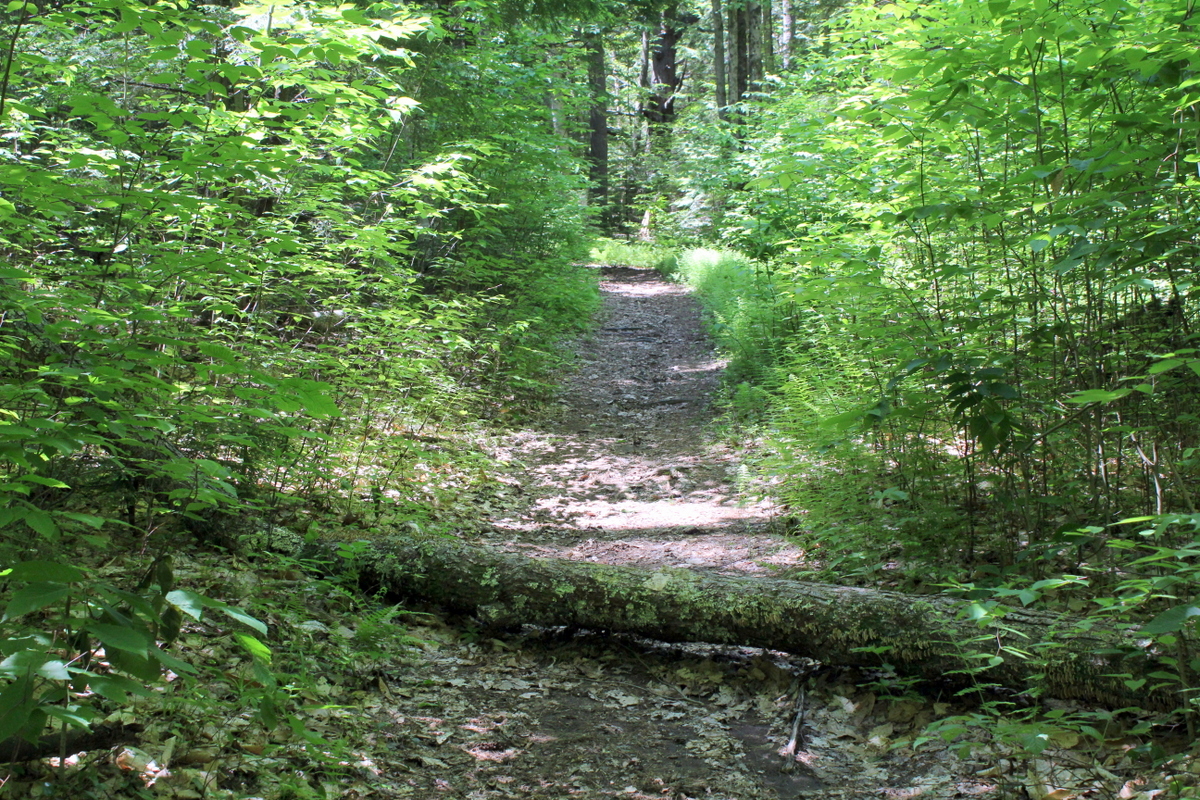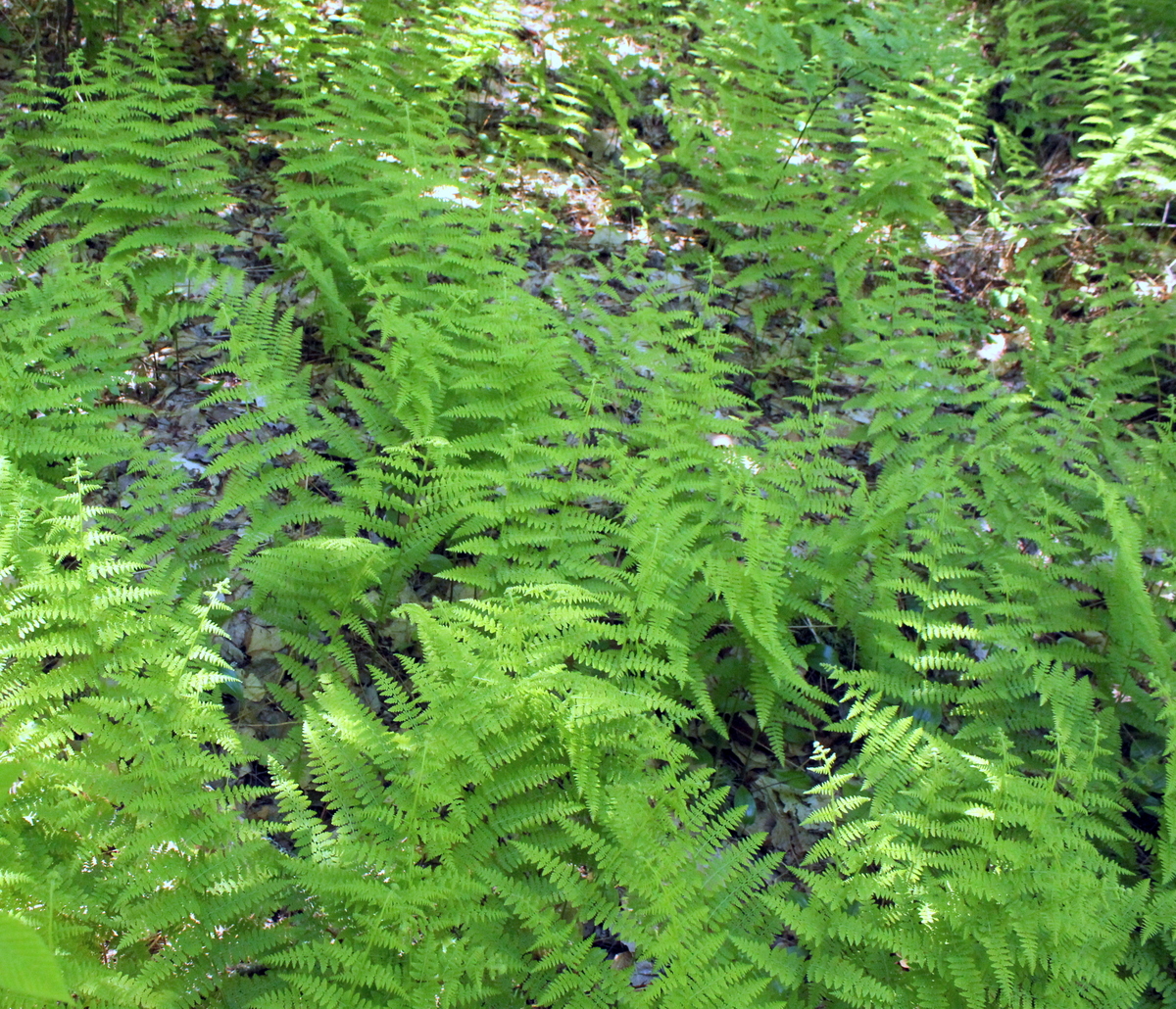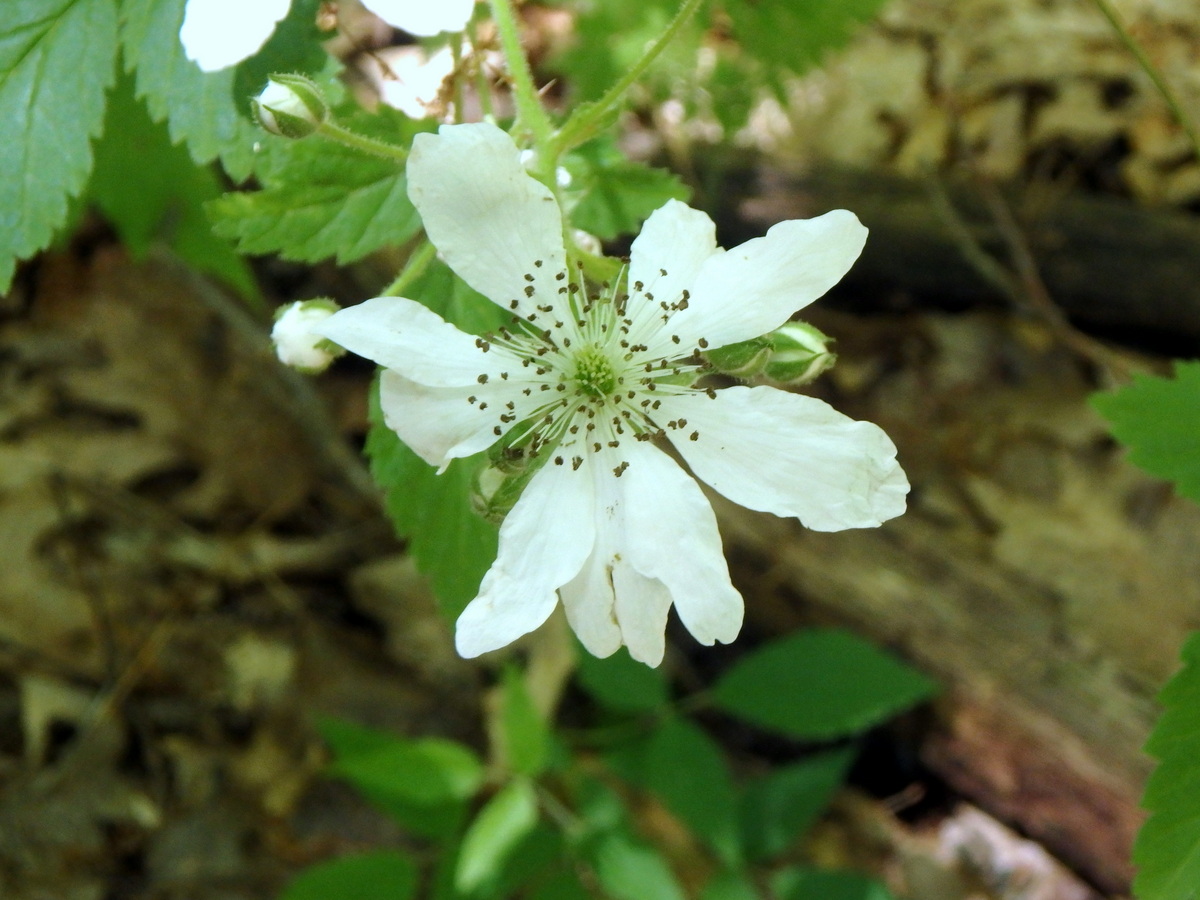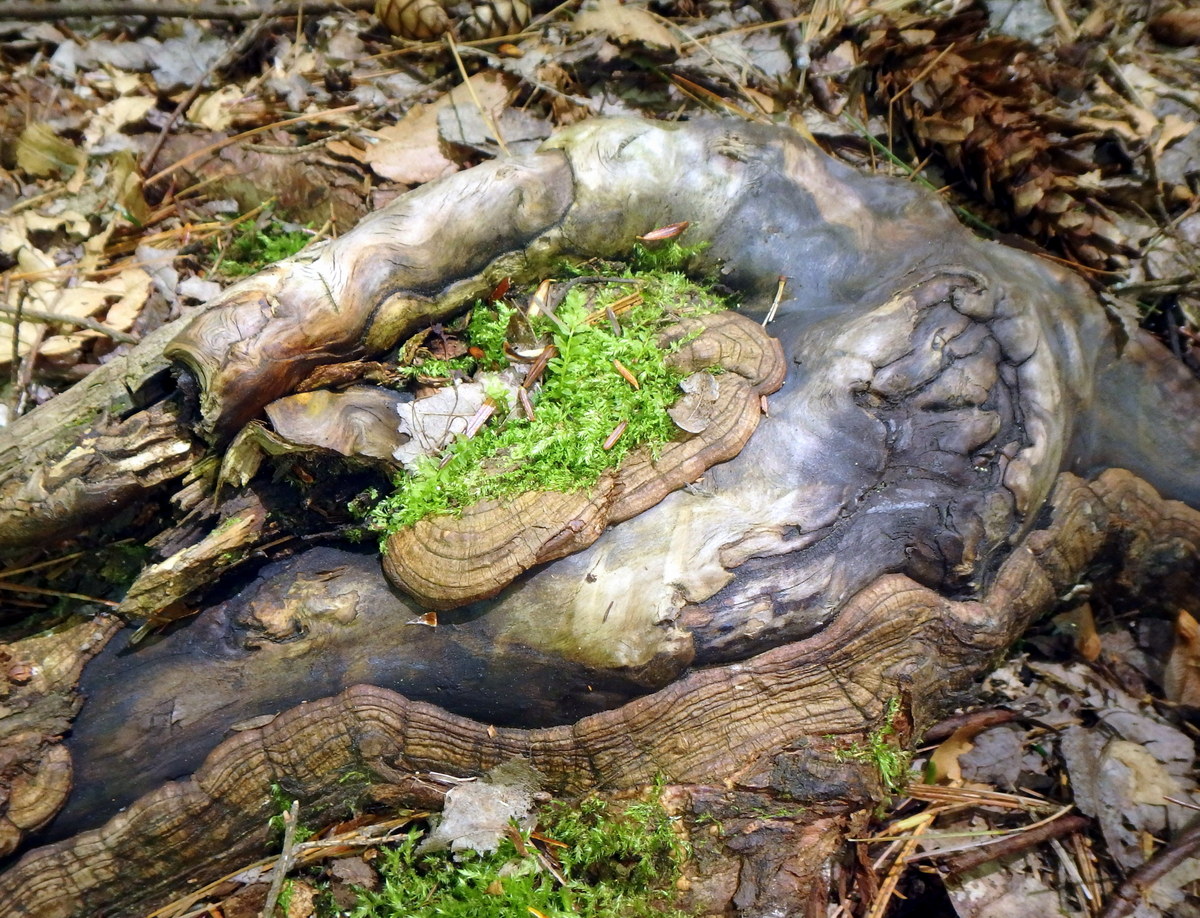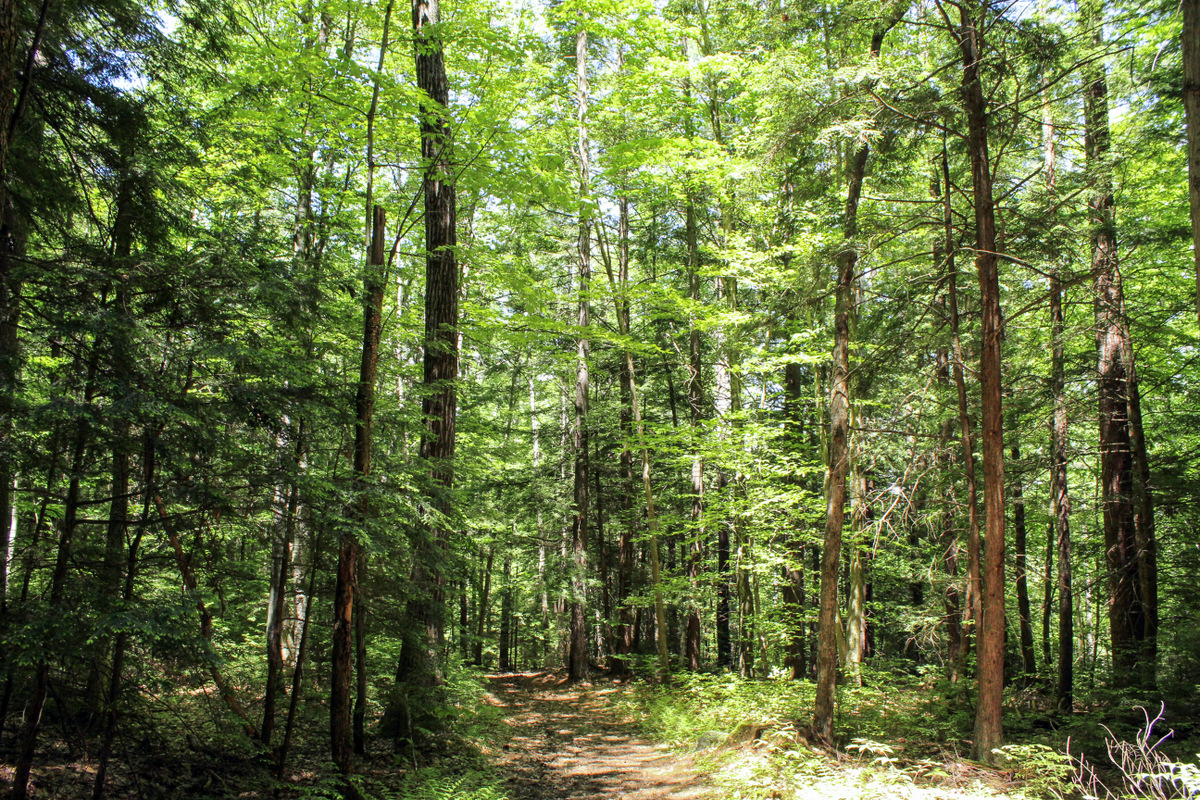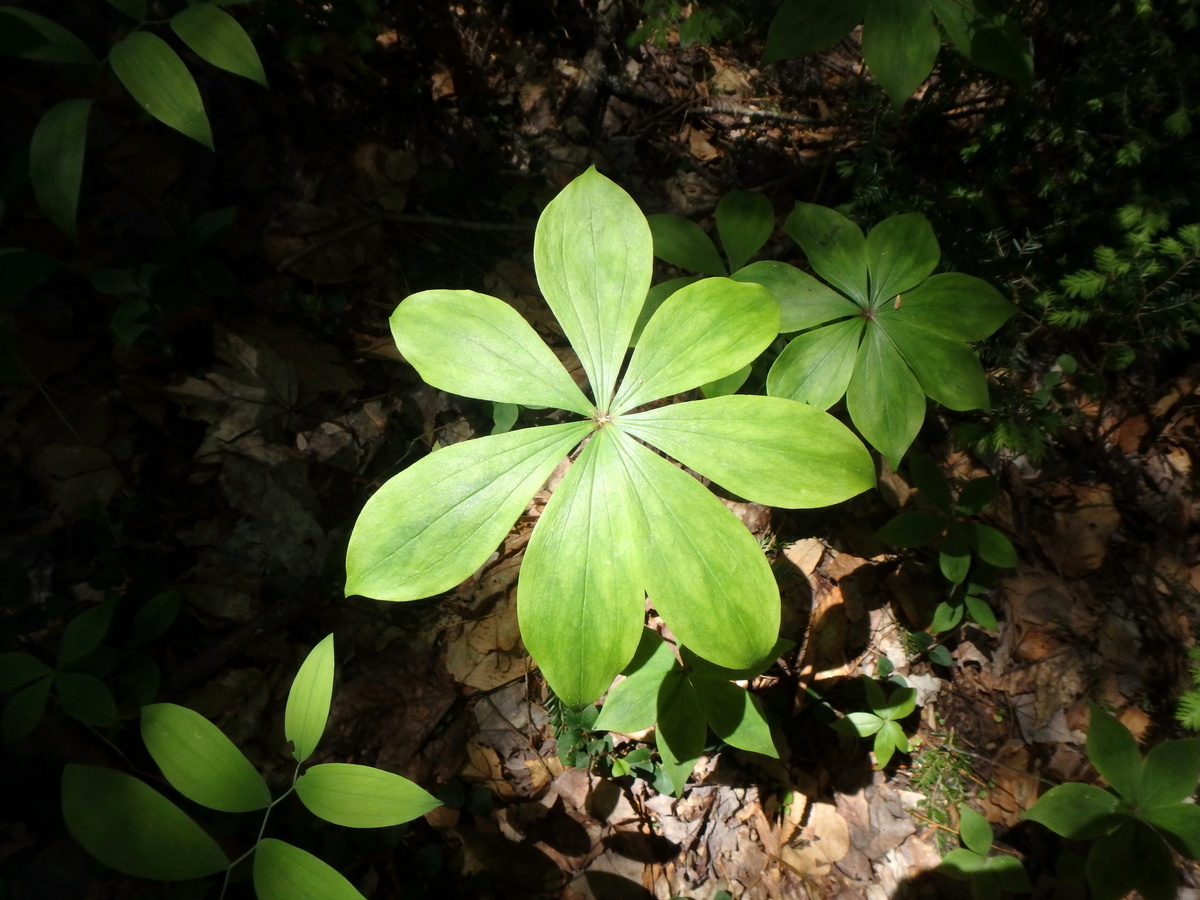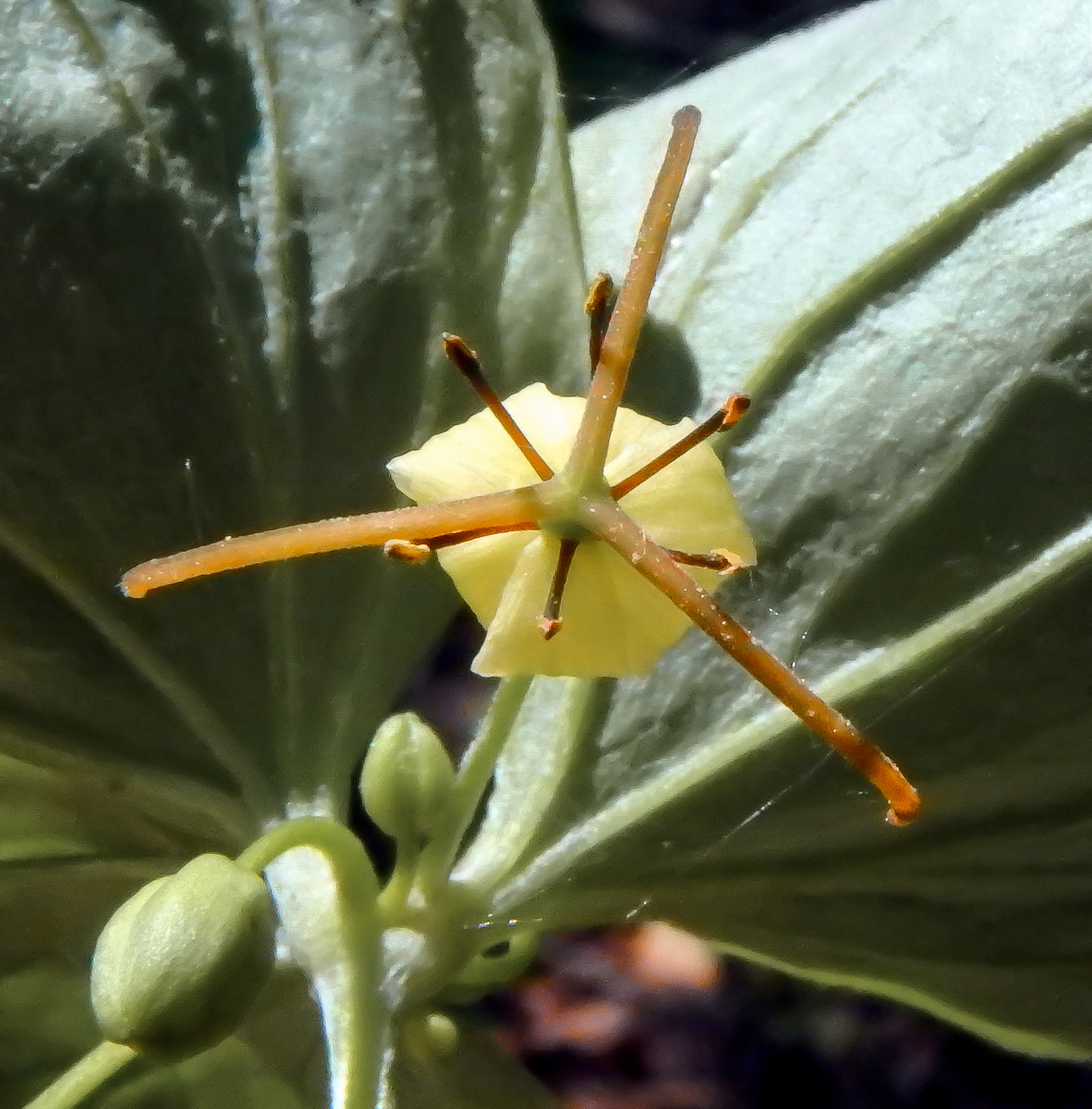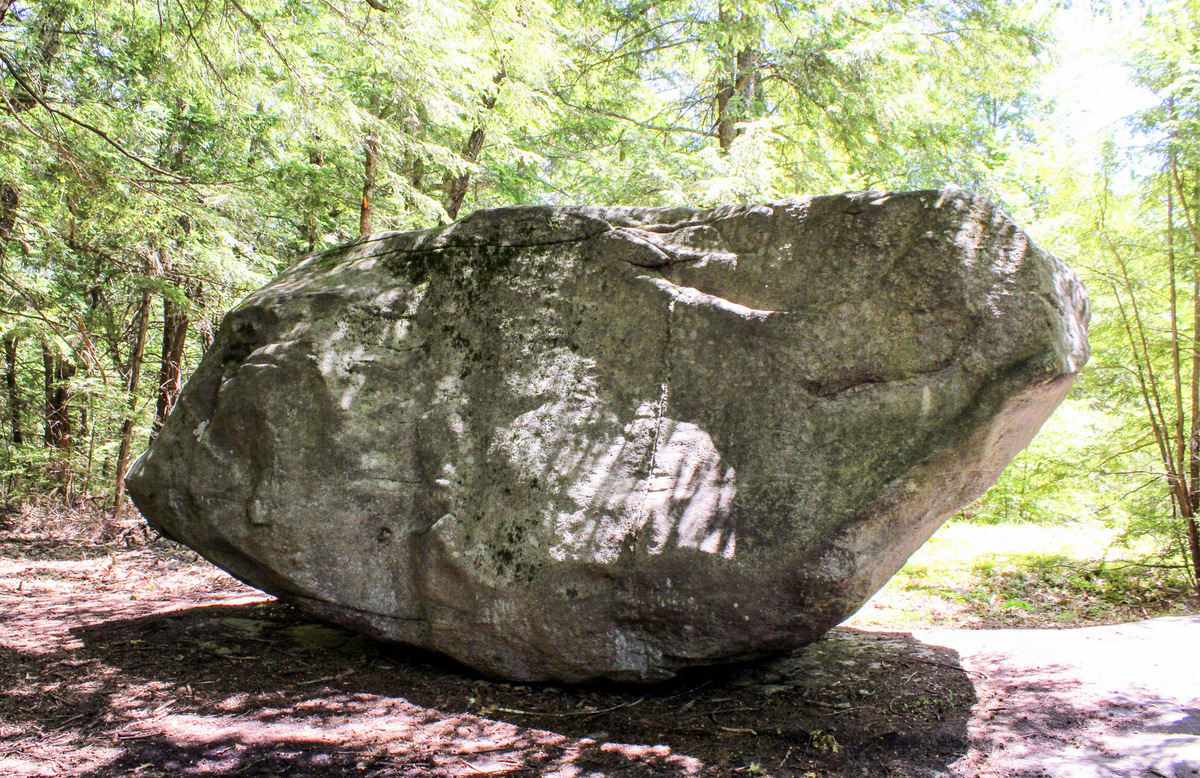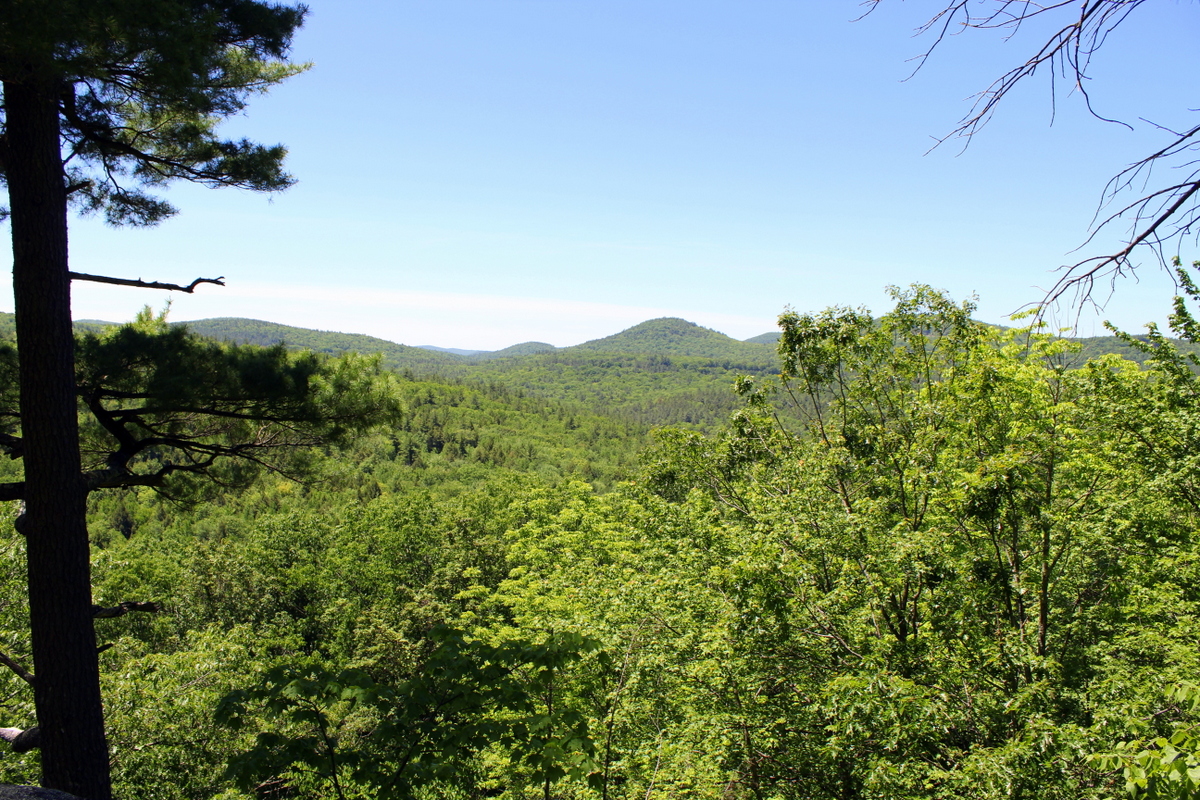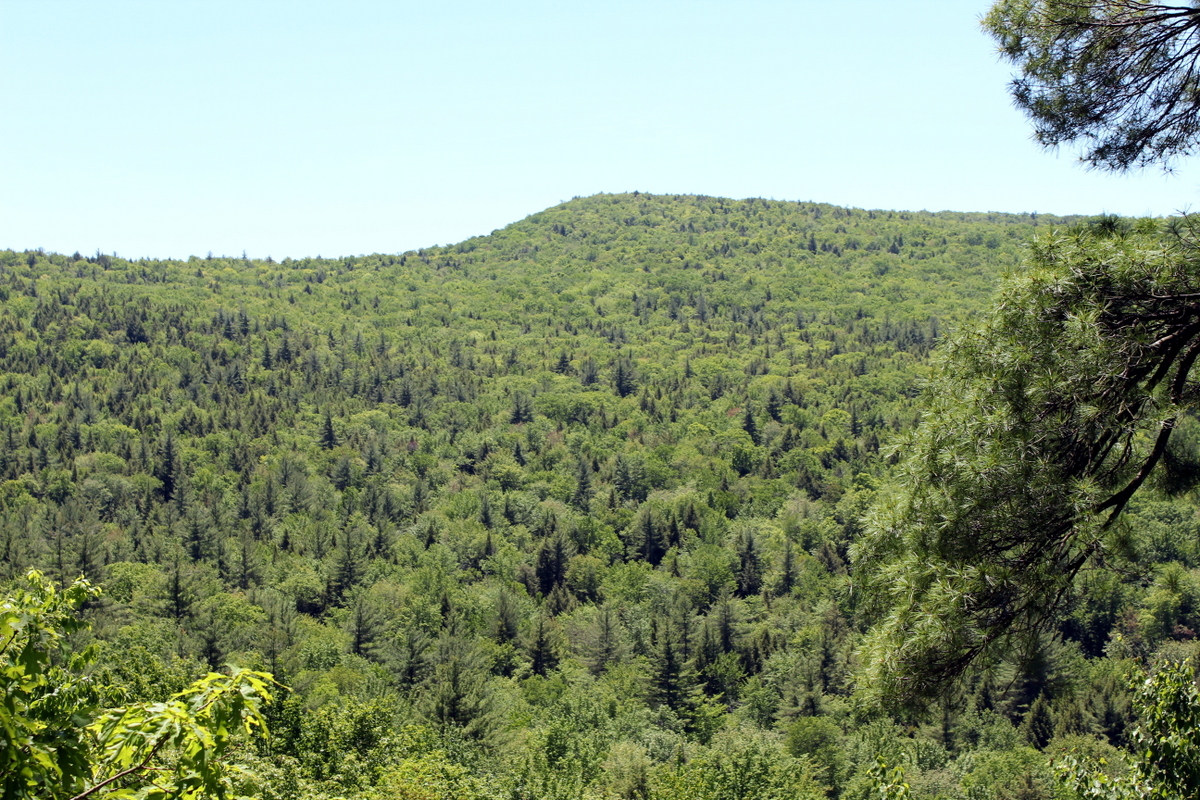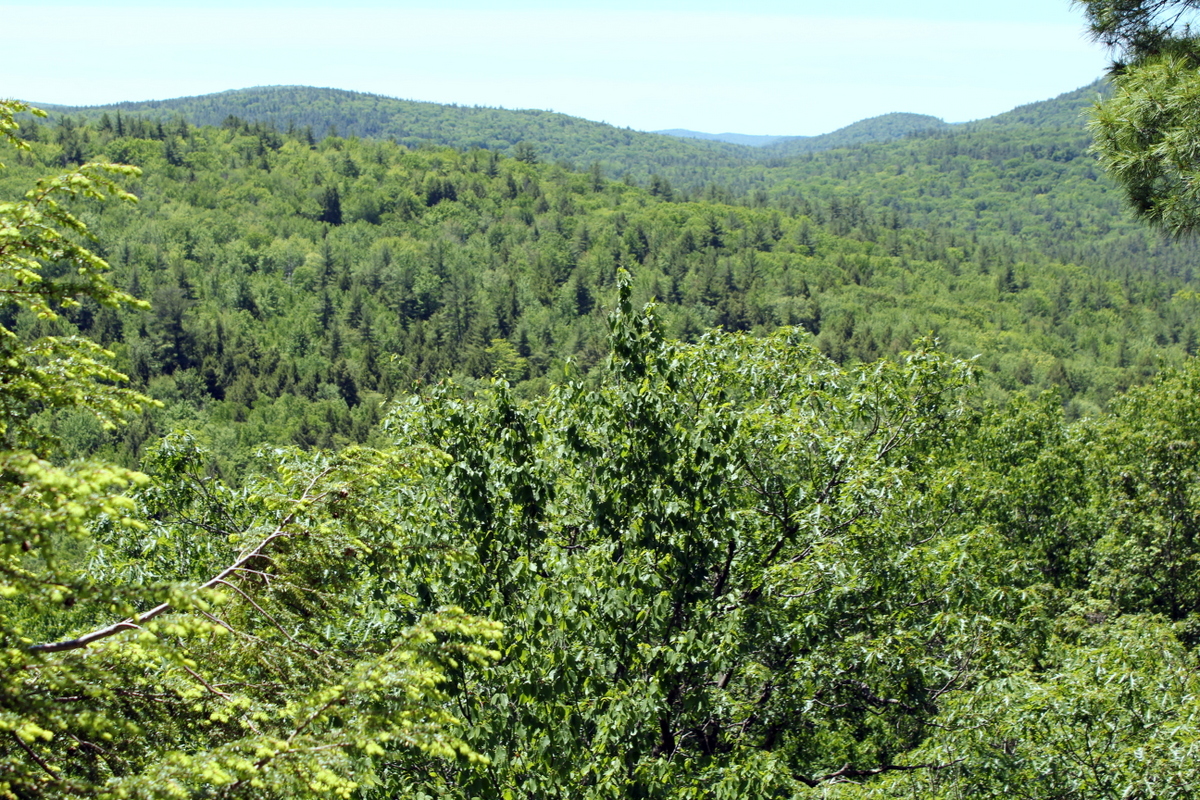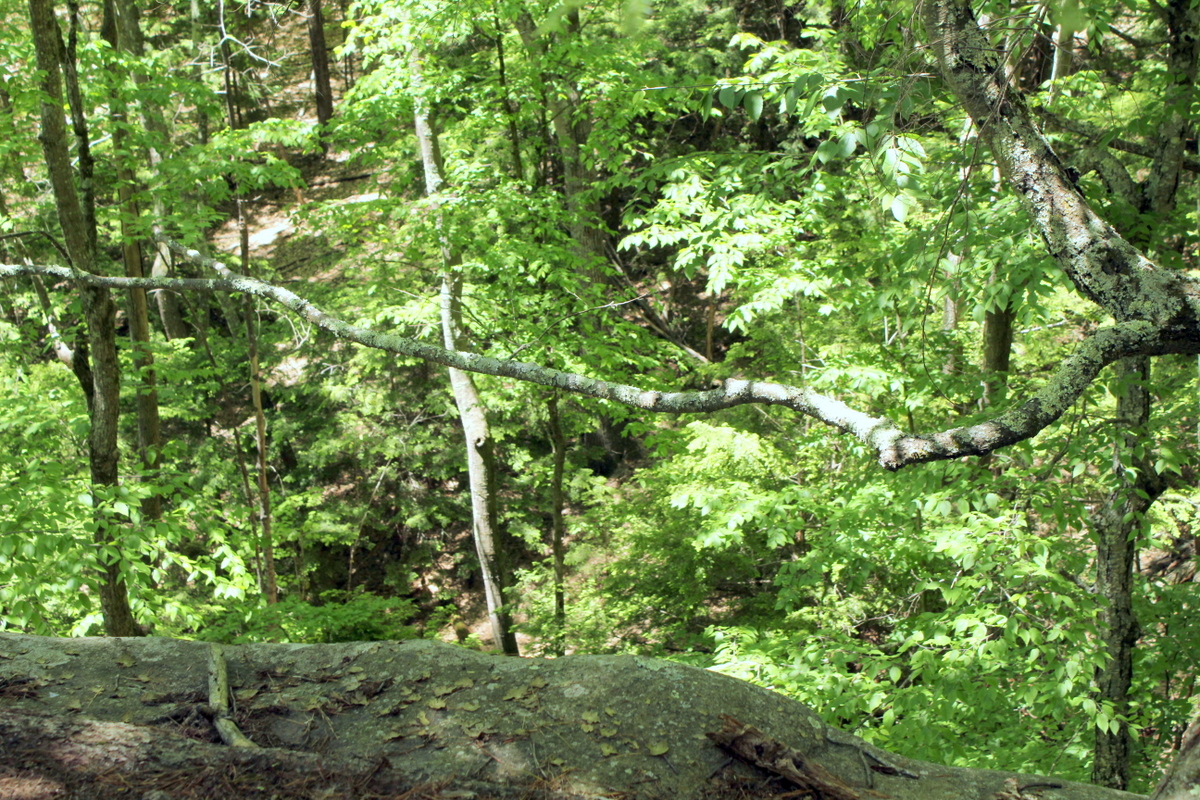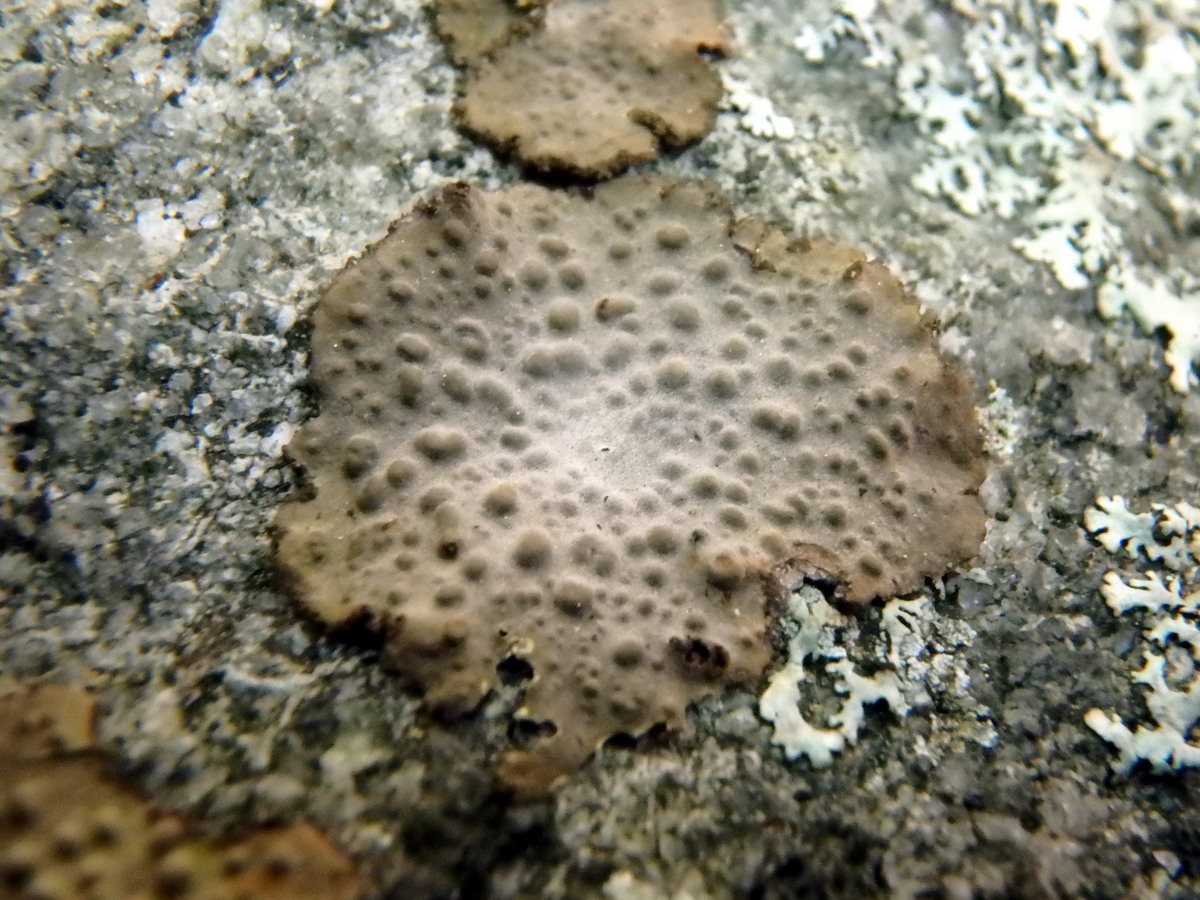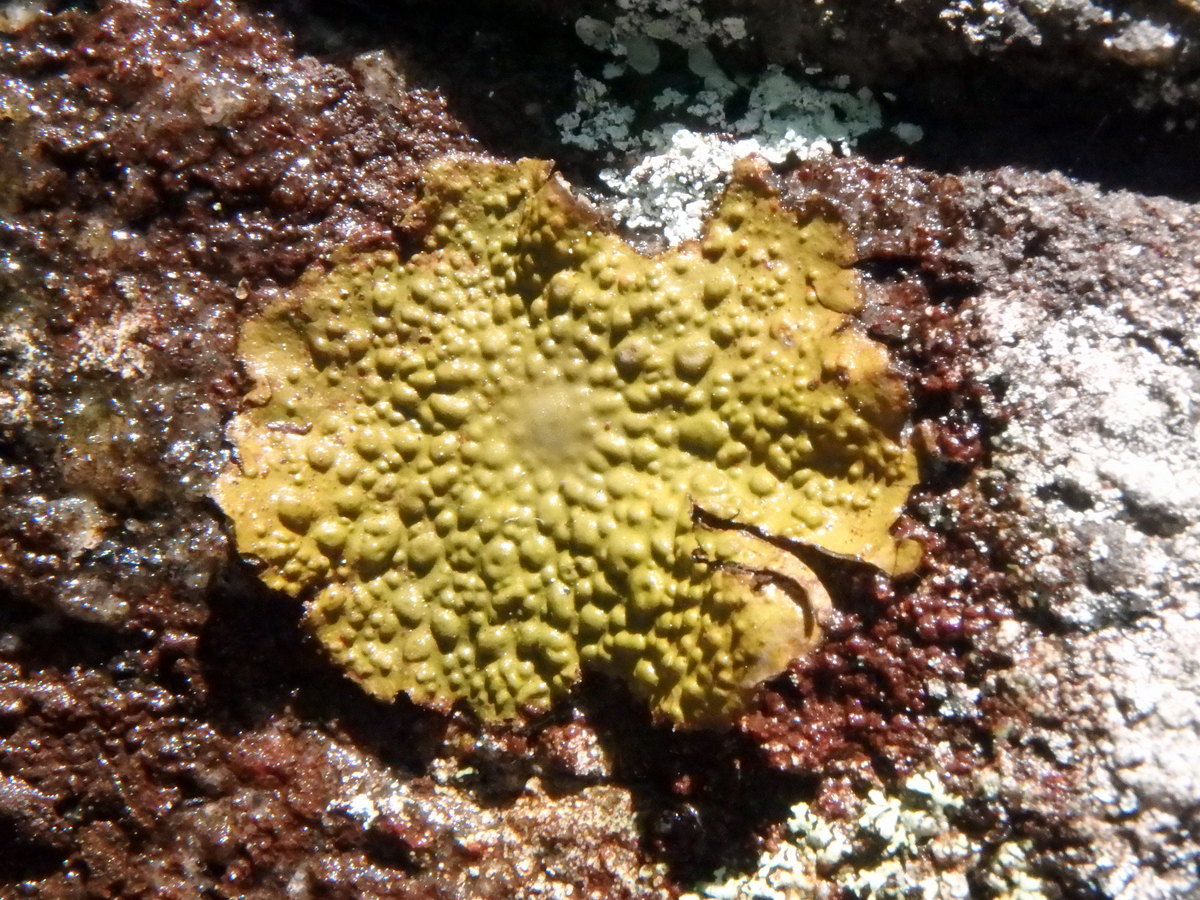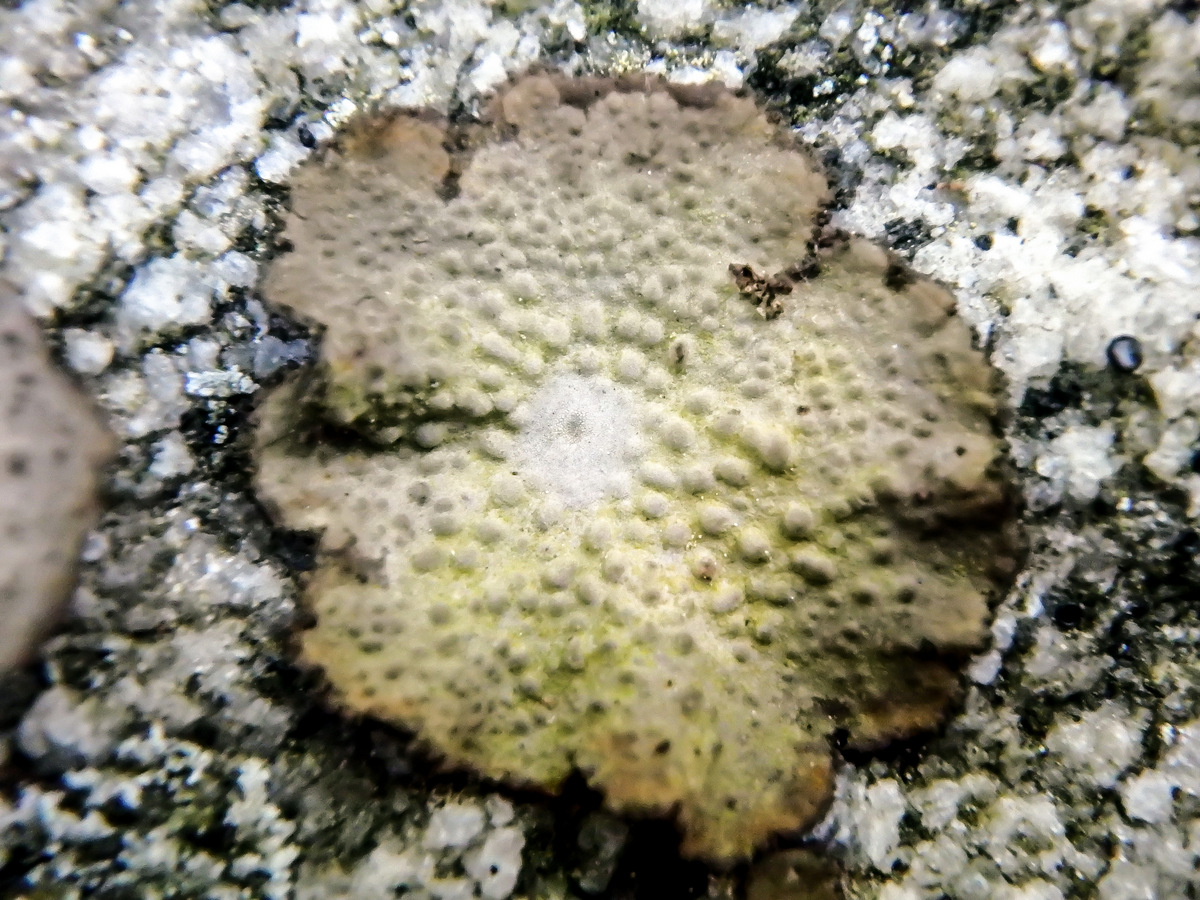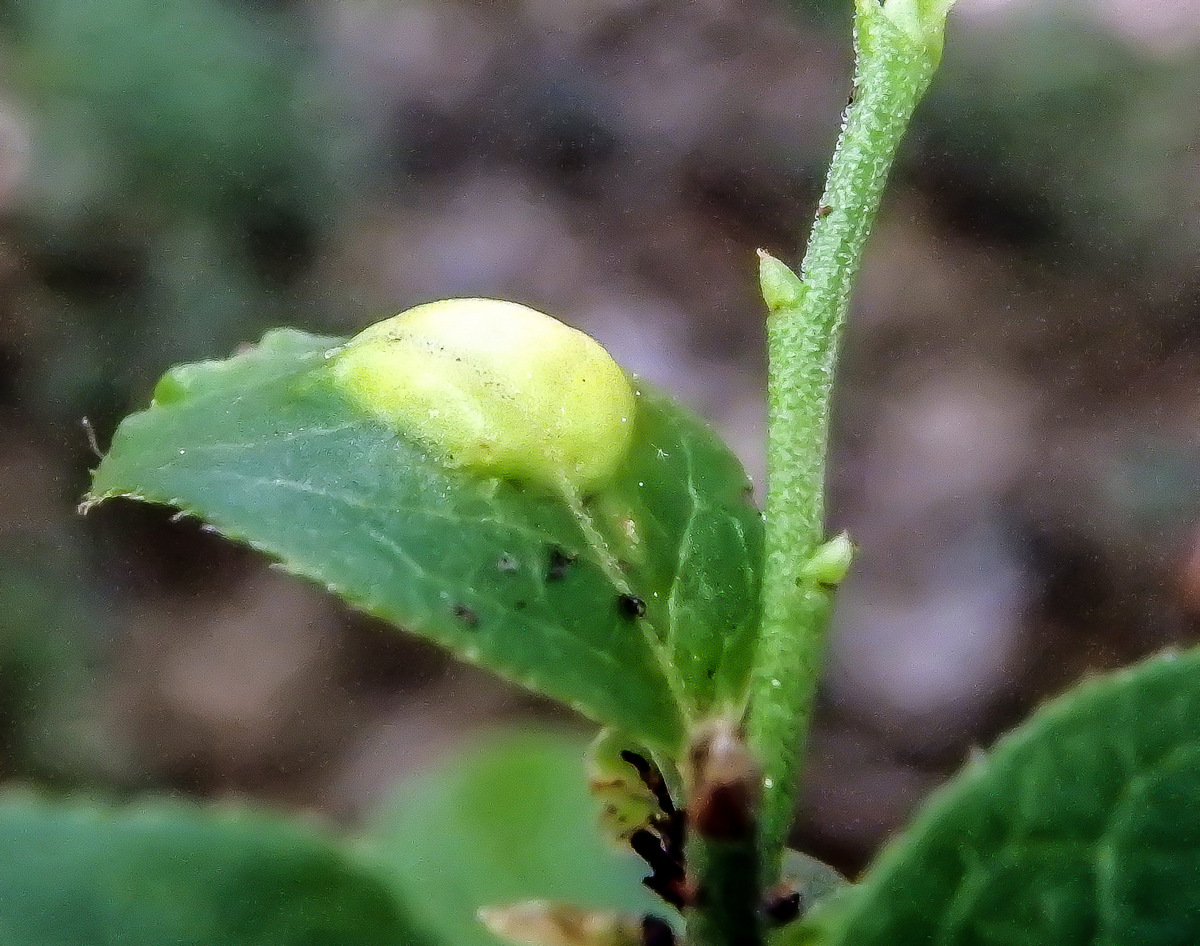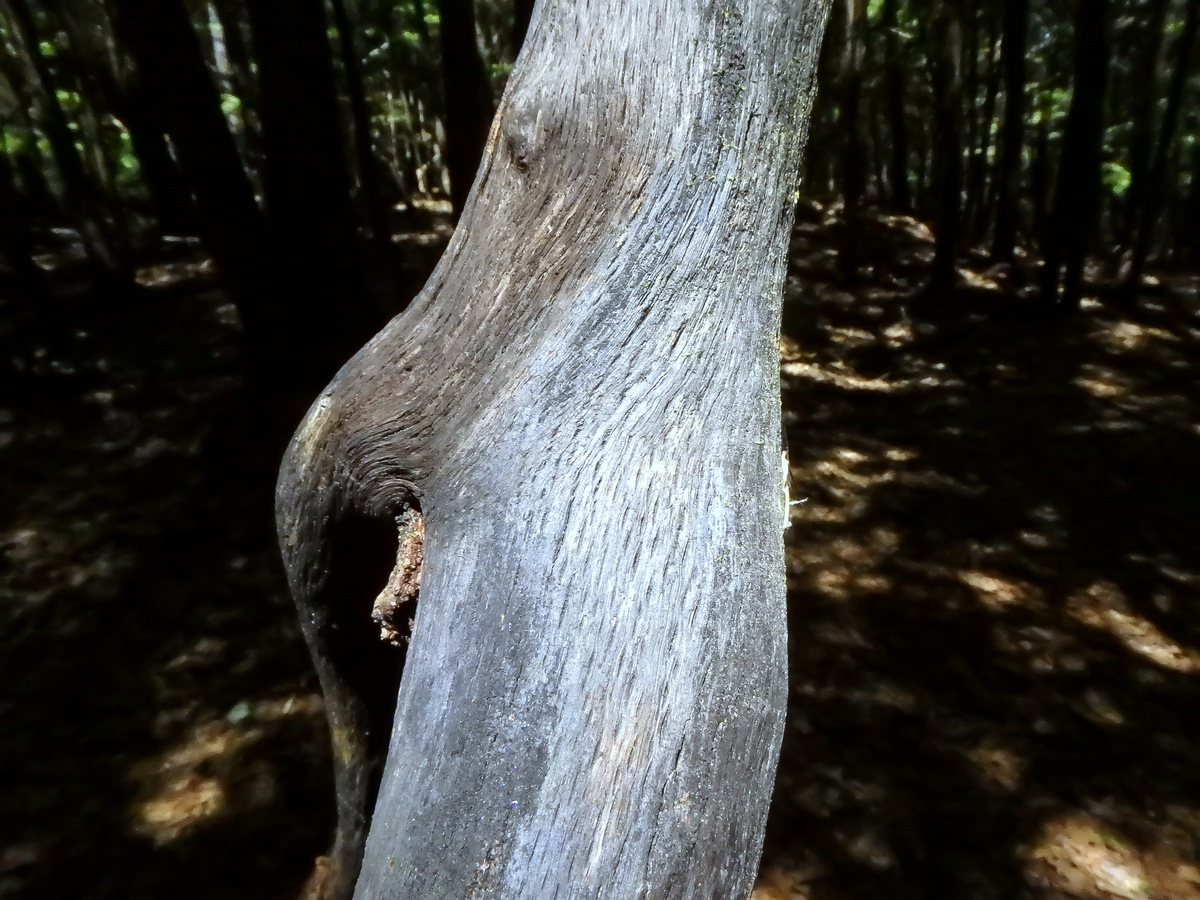
It was funny, after walking all around Goose Pond looking for them, to find blue flag irises (Iris versicolor) growing just down the road from my house. The flowers seem to appear overnight, even when the plants didn’t look budded the day before. Then, when you see one or two blossoms you start seeing them everywhere. They love wet feet and will often grow in water. The name “flag” comes from the Middle English flagge, which means rush or reed and which I assume applies to the plant’s cattail like leaves.

Black locust trees (Robinia pseudoacacia) are just coming into bloom and they’re beautiful with their long white tresses of very fragrant flowers. Honey made from the flowers is considered choice and commands a high price. These are beautiful trees and we’re lucky to have them as natives. Lucky that is, unless you want to get rid of one. Then you might not feel quite so lucky because there’s a good chance shoots will keep growing from the stump and you’ll probably have seedlings all over the yard. But why would you want to get rid of something so beautiful in the first place?

Black locust is in the pea family, as is easily seen by the shape of the flowers. The wood of the tree has been used for fence posts historically, because it is completely rot resistant. Black locust fence posts have survived a hundred years or more without rotting away. I wish you could smell those flowers. They remind me of white wisteria blossoms.

Native blue bead lilies are having a good year and it’s about time. For the last few years they haven’t bloomed well and the only thing I can think of that is different is all the rain we had last summer. The leaves of the plant look like lady’s slipper leaves without the pleats and the flowers do indeed look like miniature Canada lilies.

Since the flowers nod at the ground they’re hard to get a good shot of but the flower stalk is strong and will take a little gentle bending. Each blossom is slightly bigger than a trout lily blossom and there are usually two or three per stalk. Flower parts appear in multiples of three in the lily family and to prove it this blossom has three petals, three sepals, and six stamens.

This photo from a few years ago shows the beautiful electric blue berries that give blue bead lily its name. They will appear later on in July and August and I hope I see some this year because they can be hard to find. The berries are said to be toxic but birds and chipmunks snap them right up as soon as they ripen. Some Native American tribes rubbed the root of this plant on their bear traps because its fragrance attracted bears.

It’s spiderwort (Tradescantia) time again and I hope you aren’t tired of seeing them or hearing stories about them. They used to grow wild on the railroad tracks all the way from my house to downtown Keene and my father used to see them when he walked to and from work at the screw factory each day. That’s why he asked me why I was “dragging those damned old weeds home” when he saw me planting them in the yard. Even trains couldn’t kill them! I don’t remember what my answer was but he never made me dig them up so it must have been a satisfactory one. I’ve always loved their color and I’d guess that was probably just what I told him.

Then a few years ago I ran into a purple flowered tradescantia and I was surprised that plant breeders would be working with damned old weeds like them, but here they were.

I like the purple but I always considered blue my favorite until I saw this one. I just about fell over the first time I saw it and I thought it must be some kind of natural hybrid but no, you can buy it. Its name is “Osprey” and it works so well for me because it is simple but so very beautiful at the same time. If I had to choose which flowers new to me that I had found over the eleven years I’ve been doing this blog that were the most beautiful, this would have to be in the top five. I might just have to have one in my yard someday. Tradescantias do have a bad reputation though, because the old varieties tend to sprawl and have very viable seeds that come up everywhere but I doubt the new hybrids are very challenging. If anyone reading this has tried them, I’d be interested in hearing about the aggressiveness of the newer varieties.

This wisteria is another plant that just about knocked me over when I first saw it. It grows high up in a black cherry tree at a local school and blooms beautifully ever year at this time, unless someone can’t tell what it is by the leaves and cuts it down. That has happened but you aren’t going to kill a wisteria that easily, so it grows right back.

Since the flowers dangle high over head its hard to get good shots of them but this one is good enough to show that wisteria is another plant in the pea family, like the black locust we saw earlier. It is also very fragrant. This is a plant I’d love to have but it’s a big aggressive vine that needs a lot of room and I doubt I could keep it away from the house. If too close to a house they’ll climb up onto the roof and grow under the shingles and eventually tear them right off the roof. They’ll also find any holes in the siding, soffits and fascia and if you aren’t careful, you could find one growing inside your walls. A doctor’s wife I used to work for had me lean out of a second-floor window with a pole pruner occasionally to keep that from happening to her house. They had planted the vine to grow on a pergola that was attached to the house and it was a never-ending battle.

If there had been three red sand spurry flowers (Spergularia rubra) growing together in a triangle with their petals just touching, I could have just about hidden them all from view with a pencil eraser. That’s how small these flowers are. But size doesn’t matter where beauty is concerned because they are a quite beautiful little “weed.” This plant was originally introduced from Europe in the 1800s and it has reached many states on the east and west coasts but doesn’t appear in any state along the Mississippi river except Minnesota. It must have been introduced on both coasts rather than first appearing in New England and then crossing the country like so many other invasive plants have. I find them growing in dry, sandy waste areas.

Blunt leaved sandwort (Moehringia lateriflora) with its masses of aspirin size white flowers is blooming and I think this year it is blooming better than it ever has, because I’m seeing many thousands of flowers everywhere I go. It’s a pretty little native plant that looks like it might make a good groundcover. It is said to like woodlands, woodland edges, prairies, and along streams in rocky or sandy soil. I’ve read that it is easily overlooked and I would say that was true. Another name is grove sandwort.

I saw a beautiful old fashioned bridal wreath spirea (Spiraea prunifolia) at the local college. It looked like a floral waterfall. If you’re looking for a low to no maintenance shrub that asks for nothing, this is the shrub for you. When I was gardening professionally every yard seemed to have at least one but I don’t see many now. This one is huge; it grew far up over my head.

I find large drifts of dame’s rocket (Hesperis matronalis) in a local park and I’m always glad an overzealous weeder hasn’t weeded it out. But I suppose technically, it is a weed. In fact it’s an invasive species, but it’s a pretty one that has a heavenly fragrance. This drift used to be well mixed with white, pink and purple but now it is mostly purple, which must be the dominant color.

Dame’s rocket at a glance could easily be confused with garden phlox but just count the petals. Phlox has five petals and dame’s rocket has four. I’m seeing these plants along roadsides more each year, so they are spreading.

This is the first time you’ve seen a camas on this blog because this is the first one I’ve ever seen. It’s a very pretty flower that is in the lily family and grows from a bulb. I don’t know for sure what its name is but it resembles photos I’ve seen of the common camas (Camassia quamash.) The bulbs of the plant were highly valued by many Native American tribes. Once cooked, a third of bulb’s weight became the sugar fructose and Natives dried them or ground them into a kind of sweet flour after steaming or roasting them. According to the U.S. Forest service the prairie tribe Nez Pierce fed Lewis and Clark camas in 1805. Lewis liked them so much he over ate and became sick, but he wrote a detailed description of the plant; one of the most detailed accounts of any plant he collected on the entire expedition. If you decide to go to the prairies and try one beware, because there is one called death camas. I think it is a white flowered plant but there is no telling if they cross breed.

A new customer once told me under no circumstances should I plant anemones in her yard. She detested them, she said. Well I told her, you have anemones growing right over there. They’re native Canada or meadow anemones (Anemone canadensis.) She said they weren’t the same anemones she was talking about so I said alright, I just won’t plant any anemones, no matter where they come from. Though I worked for her for many years I never did find out what it was about anemones that she disliked so much. Since they had lived all over the world in many different countries, I’m guessing they must have been the smaller windflowers.

We have so many varieties of native viburnum here that it’s easy sometimes to say “ho hum, just another viburnum.“ That is apparently what I’ve done with the native nannyberry, also called sheepberry (Viburnum lentago,) because it has never appeared on this blog except in bud form. I found this one while searching for nodding trilliums and realized how pretty it was. In fact people like it so much it is often used as a native landscape shrub. It can also be trained to a single stem and used as a small tree.

The numerous small, five lobed white flowers are very pretty with their five yellow tipped stamens. They’ll be followed by edible dark blue, juicy one seeded berries (drupes), which are sometimes called wild raisins. If you are trying to attract birds and other wildlife to your garden nannyberry, or any of our many other native viburnums, would be an excellent choice. And you’d also have a garden full of beautiful flowers as well.

It’s going to be a good year for both raspberries and blackberries. These plants grow along one of the walks I regularly take, so I might have to sample a few before the birds get them all.

For the violet lovers out there, I finally found a true marsh blue violet (Viola cucullata) that I can be sure of. I can say, also for certain, that it is not the only violet that raises its flowers high above the leaves on long stems, as the Forest Service says it is. There has to be at least one other violet that does that because it is that one that I have kept confusing with the marsh blue violet. Whatever it is, it grows by the hundreds in the deep cut rail trail in Westmoreland.

If you’ve ever looked closely at a violet blossom, you probably noticed that most of them have fine hairs called “beards” on the two side petals, just at the throat. Marsh blue violets have short, thick, club shaped hairs instead and it is that feature that will make them easy to identify from now on. At least I hope so. This plant has given me a rough ride.

The first rose I saw this season was a single pink one that reminded me of an old standby called “Betty Prior” but I think it was too tall and too uniformly pink to be Betty.

I found a very fragrant azalea blooming in a local park that looked a lot like our native early azalea. Unfortunately all the leaves were being eaten by something. The soft tissue was gone and only the ribs were left. Whether this will weaken the plant enough to keep it from blooming next year, I don’t know. I hope not, because it’s a beautiful thing. There is no such thing as too much beauty in this life.
Every bird, every tree, every flower reminds me what a blessing and privilege it is just to be alive.
~Marty Rubin
Thanks for coming by.








